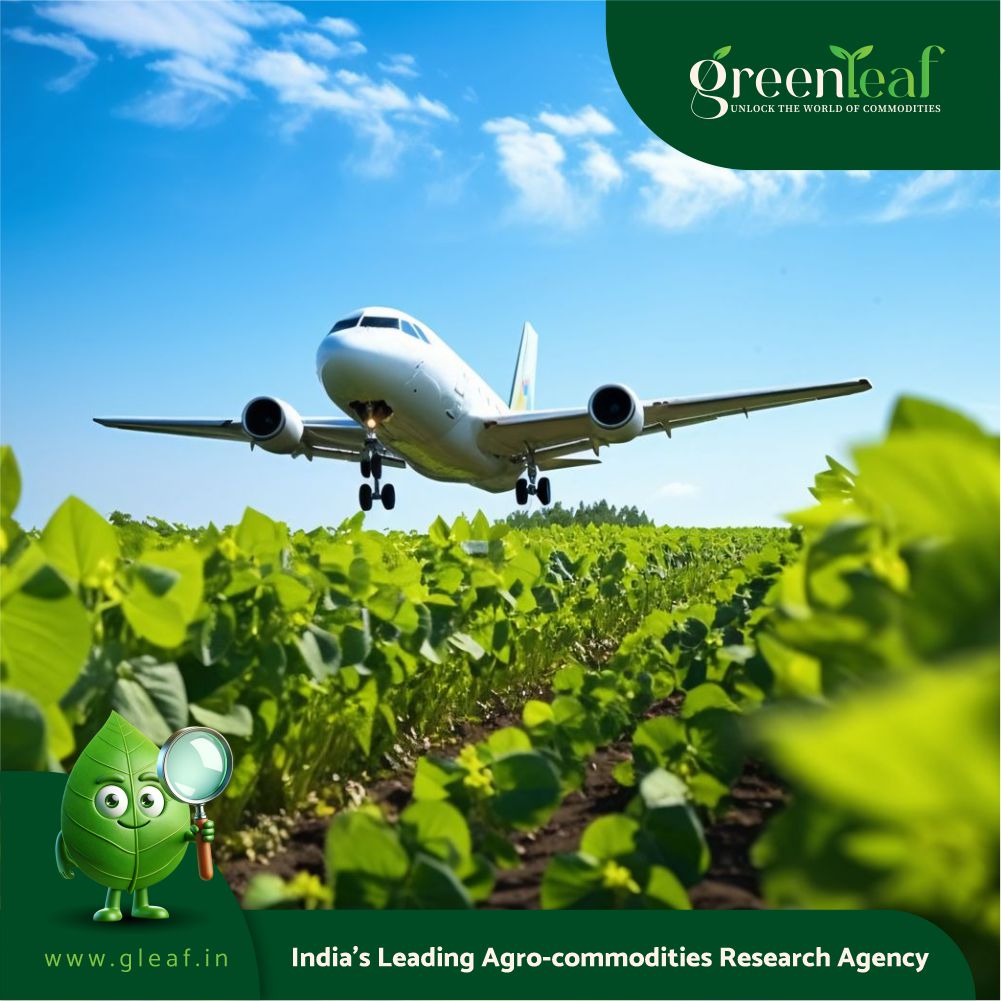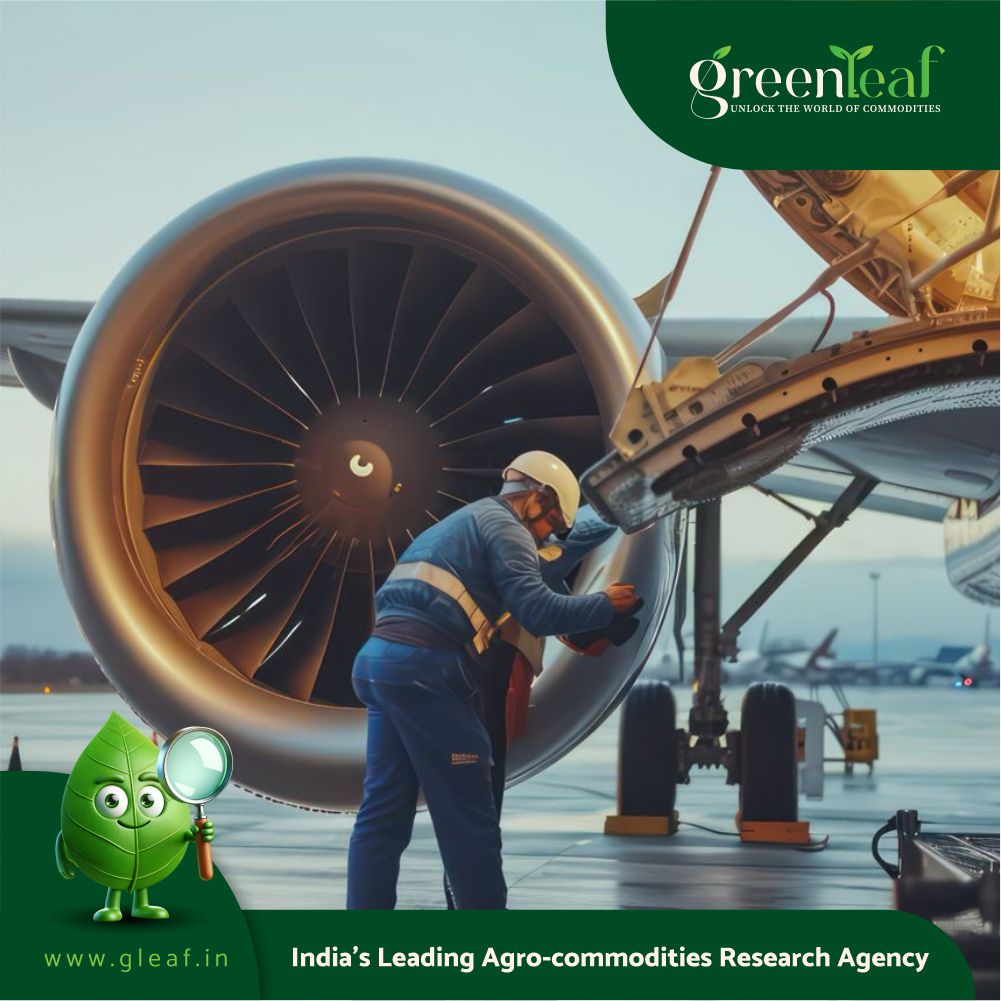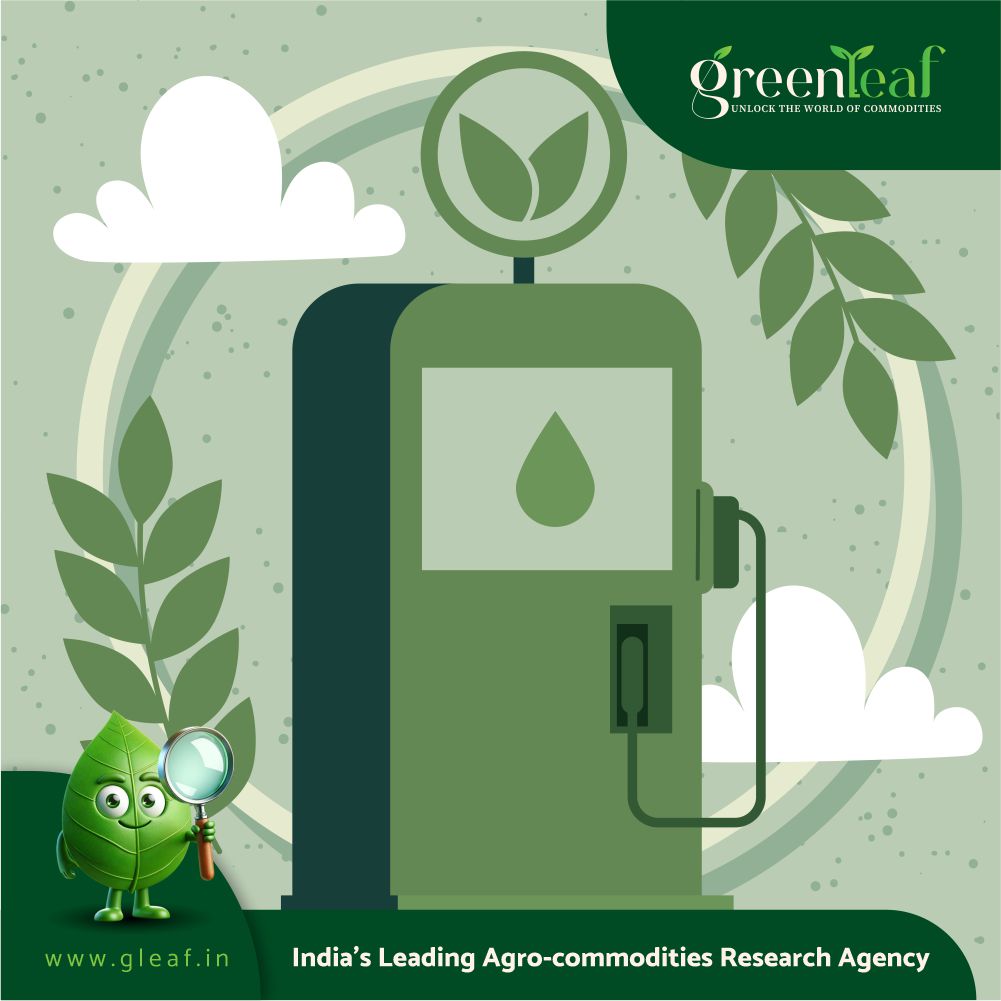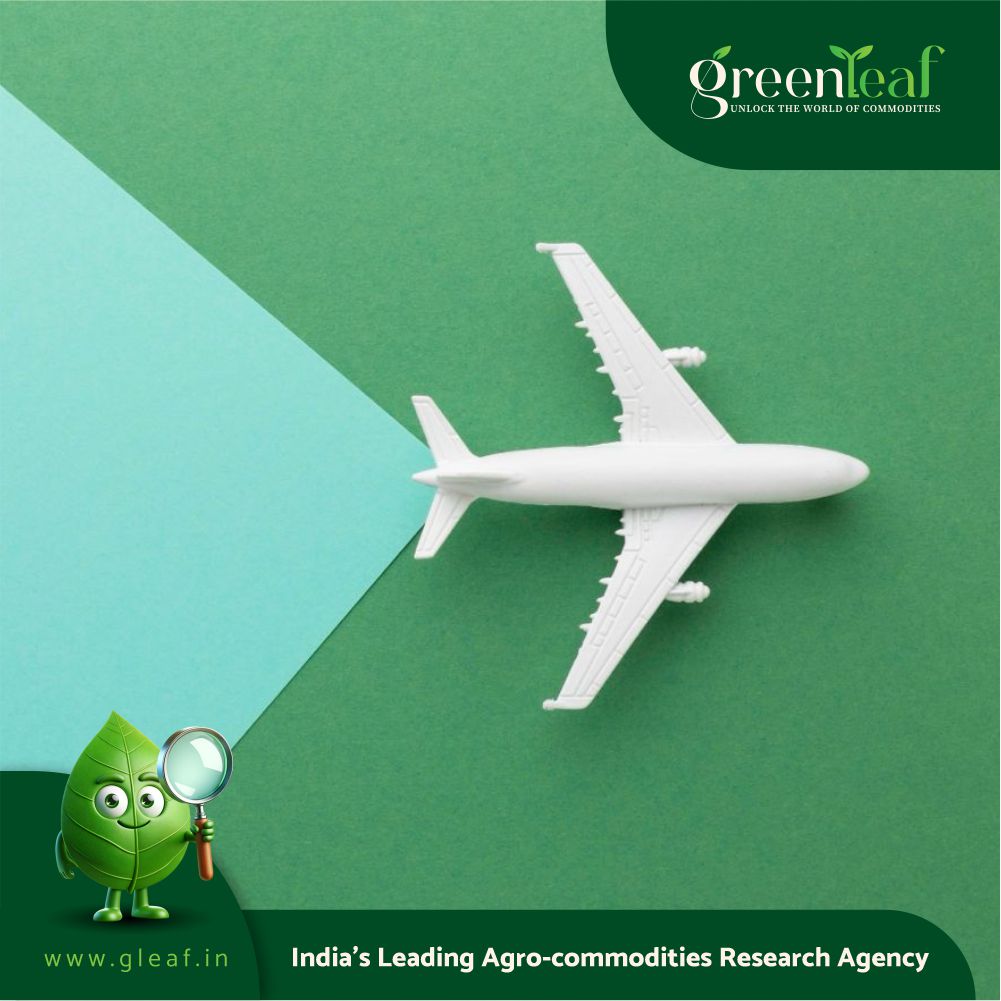China, as a Category I Council Member of the International Civil Aviation Organization (ICAO) and the second-largest aviation market, is rapidly advancing the research, production and deployment of SAF to achieve its carbon peak and carbon neutrality goals, while meeting the industry’s sustainability requirements. In recent years, China has made significant breakthroughs in SAF technology development, large-scale production and airworthiness certification, gradually establishing itself as a global leader in SAF and laying a solid foundation for its commercial adoption.
China’s policy framework for SAF remains in its early stages but has demonstrated a pragmatic and steady progression. The Civil Aviation Administration of China (CAAC) has issued a series of directives aimed at supporting SAF adoption.
In 2022, the 14th Five-Year Plan for Green Civil Aviation Development established the non-mandatory goal of consuming 20,000 tonnes of SAF annually by 2025, with an accumulated usage target of 50,000 tonnes. This marked China’s first quantitative target for SAF, a significant milestone for the domestic aviation sector. In July 2023, CAAC released the Sustainability Requirements for Alternative Aviation Fuels (Draft for Public Consultation), aiming to develop a nationally tailored certification standard that aligns with international practices. In August 2023, SAF was included in the Green Low-Carbon Advanced Technology Demonstration Programme, jointly launched by the National Development and Reform Commission (NDRC) and CAAC, along with eight other central government agencies.
In October 2023, CAAC, in collaboration with the Ministry of Industry and Information Technology, Ministry of Science and Technology, and Ministry of Finance, issued the Green Aviation Manufacturing Development Outline (2023-2035). This directive highlighted the commitment to integrating SAF into China’s domestic aircraft industry, stating that by 2025, domestically produced aircraft would undertake SAF demonstration flights, with phased trials of various SAF blending ratios. Additionally, the directive called for the development of SAF-related standards, certification frameworks and airworthiness validation.
China’s SAF development entered a new phase in July 2024 with the establishment of the Sustainable Aviation Fuel Research Centre under CAAC’s Second Research Institute. This centre is tasked with formulating SAF product standards, enhancing quality assurance mechanisms, and advancing sustainability evaluation methodologies to facilitate the creation of China’s independent SAF certification system (CSCS).
SAF production capacity and market expansion
China’s SAF production capacity primarily utilises the HEFA (Hydroprocessed Esters and Fatty Acids) pathway, with its operational and planned production capacity reaching 3.32 million tonnes per year (t/y). Currently, six companies have commenced SAF production, with a total output of 870,000 tonnes annually:
• Sinopec Zhenhai Refining – 100,000 t/y
• Junheng Group – 200,000 t/y
• Ecotech Environmental – 50,000 t/y
• Haixin Energy – 50,000 t/y
• Jia’ao Lianyungang – 370,000 t/y
• Pengyao Environmental – 100,000 t/y
Four of these companies have obtained airworthiness certification from CAAC, while an additional 2.45 million tonnes per year are under construction or planning.
According to China Civil Aviation Network, China’s total aviation fuel consumption in 2024 amounted to 38.2 million tonnes. Deloitte estimates that if China’s SAF adoption aligns with IATA’s target of 5.2% usage, SAF demand could reach 3 million tonnes per year by 2030. Projections from CAAC’s think tank, Civil Aviation University of China, suggest a 10% blending scenario, leading to 4 million tonnes of SAF demand, whereas SkyNRG and ICF forecast a 15% blending scenario, requiring 7.2 million tonnes of SAF supply. Based on existing and upcoming capacity expansions, China’s SAF industry is positioned to meet 2030 demand.
Looking beyond 2030, China’s SAF blending ratio is expected to rise significantly. The Civil Aviation University forecasts blending rates of 25% by 2040, 50% by 2050, and 65% by 2060, translating into SAF demand of 7.12, 12.24, and 18.75 million tonnes per year, respectively. Deloitte’s research suggests that if all potential feedstock is converted into SAF, China’s theoretical SAF supply could exceed 19 million tonnes per year by 2030, far surpassing projected domestic demand. With government incentives such as tax reductions and subsidies expected to intensify toward the 2060 carbon neutrality deadline, corporate investment in SAF production is anticipated to grow exponentially.
On 18 September 2024, the NDRC and CAAC launched a SAF pilot programme, aimed at testing fuel supply security, quality assurance, certification and infrastructure readiness. This programme consists of two phases:
• Phase 1 (September–December 2024): SAF refuelling trials on 12 flights operated by Air China, China Eastern Airlines, and China Southern Airlines, departing from Beijing Daxing, Chengdu Shuangliu, Zhengzhou Xinzheng and Ningbo Lishe airports.
• Phase 2 (2025 full-year expansion): Increased participation from more airlines and airports.
By March 2025, all domestic flights departing from these four airports will include 1% SAF blending, marking China’s first step toward standard SAF refuelling operations. Although current deployments remain limited to specific flights and minimal blending ratios, these trials will serve as a technical validation stage for broader market adoption between 2026 and 2030.
Structural constraints on SAF commercialisation
China’s sustainable aviation fuel industry primarily relies on hydroprocessed esters and fatty acids (HEFA) technology, which is well-established. However, feedstock supply – particularly waste-based lipids such as used cooking oil (UCO) – remains a critical limitation, posing significant challenges to raw material availability.
According to China Research Network, the country’s annual food waste volume reached approximately 120 million tonnes in 2020 and is expected to increase to 170 million tonnes by 2025, approaching saturation. Given a 4.5% oil extraction rate, this translates to 5.4 million tonnes of UCO feedstock potentially available for SAF production. With the 78% conversion rate reported at Sinopec Zhenhai Refinery, 5.4 million tonnes of UCO could yield 4.2 million tonnes of SAF. However, this falls far short of future industry demand and a substantial supply gap is anticipated beyond 2030.
Moreover, SAF competes with biodiesel, which shares a similar feedstock base, as biodiesel adoption expands in road transport and shipping sectors. China’s existing and planned SAF production capacity has reached 3.32 million tonnes per year, meaning that even if all UCO resources were dedicated to SAF, only 900,000 tonnes of additional SAF production capacity would remain available – an insufficient margin for long-term growth. These constraints necessitate alternative technology pathways to ensure stable SAF production beyond 2030.
In addition, China’s UCO collection system remains fragmented, dominated by independent traders, limiting scalability and increasing inefficiencies. Statistics indicate that over 80% of UCO supply is controlled by individual operators, leading to unstable sourcing, dispersed collection networks and elevated transportation costs.
Recognising these challenges, the Chinese government has introduced policy measures to improve domestic UCO availability. On 15 November 2024, the Ministry of Finance and the State Administration of Taxation issued a policy removing export tax rebates for chemically modified animal, plant and microbial oils and fats (including their derivatives and non-edible oil products formulated from mixtures within this category), thereby increasing domestic feedstock retention rates. Additionally, the elimination of the 13% VAT on UCO is expected to redirect more feedstock into the domestic SAF supply chain, enhancing production stability. Despite these advancements, further optimisation of the collection network and standardisation of industry practices are necessary to achieve large-scale SAF adoption.
Certification and regulatory challenges
China’s SAF certification framework remains in development, with quality certification and sustainability certification as the two core pillars. As global demand for green aviation fuels grows, more stringent certification standards are expected to emerge, ensuring both fuel safety and environmental integrity.
For quality certification, international SAF standards are primarily governed by the American Society for Testing and Materials (ASTM), specifically ASTM D7566, which defines the chemical properties and blending limits for SAF to ensure safe integration into aviation engines. In China, SAF producers must submit an airworthiness approval application to CAAC, which currently adopts GB6537-2018 as the national reference standard for aviation fuel certification. However, the certification process remains lengthy and stringent, with only four companies currently holding CAAC airworthiness certification, covering 720,000 tonnes per year of certified SAF capacity. Future efforts must focus on streamlining approval processes and shortening certification timeframes to accelerate SAF commercial adoption.
For sustainability certification, SAF production must adhere to environmental protection criteria to prevent food security risks, deforestation and excessive water resource consumption. The most recognised international certification schemes include:
• International Sustainability & Carbon Certification (ISCC)
• Roundtable on Sustainable Biomaterials (RSB)
• Renewable Fuel Standard (RFS)
These certifications are verified by independent third-party organisations to ensure compliance with sustainability benchmarks. However, China has yet to establish a robust carbon emission accounting framework, limiting the credibility of domestic SAF certification in the international market. Consequently, Chinese producers primarily rely on ISCC and RSB for certification, but to enhance global competitiveness, an independent national SAF sustainability certification system must be developed.
Economic viability
Despite SAF’s potential in aviation emissions reduction, economic feasibility remains a primary barrier to widespread adoption – a challenge shared by SAF markets worldwide. The production cost of SAF ranges from two to five times higher than conventional petroleum-based jet fuel, limiting commercial scalability. High production costs pose financial pressures on both airlines and consumers, reducing willingness to adopt SAF at a meaningful scale.
SAF’s elevated costs stem from raw material procurement, technology pathways, production location, transportation logistics and infrastructure investments. In China, UCO feedstock costs approximately 8,000 RMB (US$1,115) per tonne, while SAF produced via the HEFA pathway incurs a production cost of 15,000 RMB (US$2,090) per tonne, significantly exceeding the price of conventional jet fuel, which averaged 6,586 RMB (US$918) per tonne in 2022.
Despite SAF’s substantial emissions reduction benefits, the early-stage SAF market in China is constrained by limited supply chain maturity and insufficient large-scale production, resulting in persistently high per-unit costs. While government subsidies are gradually being introduced, financial incentives remain insufficient to offset airlines increased operational expenses when adopting SAF.
To achieve economic competitiveness, SAF must:
1. Enhance production efficiency by optimising technological pathways;
2. Expand feedstock supply by diversifying raw material sources;
3. Scale up production capacity to achieve economies of scale;
4. Leverage policy incentives and market-based mechanisms to reduce SAF price differentials; and
5. Accelerate progress towards price parity, making SAF more financially competitive with conventional jet fuels.
China’s SAF industry is advancing, but challenges in feedstock availability, certification alignment and economic feasibility must be resolved to enable large-scale commercial adoption. Addressing these barriers requires regulatory optimisation, technological innovation and market-based financial incentives. With continued policy intervention, certification system improvements and investment in alternative SAF technologies, China can enhance SAF availability, economic viability and international market competitiveness, fostering a sustainable aviation transition.
Structural solutions for SAF market expansion
The high cost of SAF is not solely attributable to production technology but also arises from complexities within the supply chain. From feedstock sourcing to final consumption, stakeholders face various challenges that hinder SAF’s price competitiveness with conventional jet fuel. Achieving price parity requires optimising supply chain management, addressing structural inefficiencies, and improving market efficiency.
Feedstock suppliers:
SAF production relies heavily on waste-based feedstocks, particularly UCO, but supply instability persists due to several factors:
• Fluctuations in collection volumes – UCO availability is impacted by seasonal variations, regulatory changes, and market dynamics.
• Export market competition – Despite the removal of UCO export tax rebates, international demand remains strong, affecting domestic availability.
• Feedstock quality variability – UCO from different sources has inconsistent properties, requiring extensive pre-treatment, which increases production costs.
Proposed solutions: Establishing a standardised collection system and long-term supply agreements between UCO providers and SAF manufacturers can enhance feedstock stability. Additionally, government-imposed quality standards can reduce pre-treatment costs and improve operational efficiency.
SAF producers:
SAF manufacturers primarily utilise the HEFA pathway, but several operational challenges remain:
• Challenges in securing long-term offtake agreements – Due to high SAF prices, airlines are reluctant to commit to long-term purchase contracts, affecting investment decisions.
• Feedstock supply variability – Unpredictable UCO availability negatively impacts refinery throughput, raising operational costs.
• Shortage of skilled professionals – SAF production requires specialised chemical engineering expertise, increasing human capital costs.
Proposed solutions: Government subsidies can help mitigate price differentials, encouraging airlines to sign long-term procurement agreements. Simultaneously, investment in technological innovation can improve production efficiency and lower unit costs.
Airports and fuel service providers:
Airports serve as key SAF distribution hubs, but face obstacles related to fuel availability, infrastructure adaptation and blending regulations:
• Limited SAF availability – Airports lack stable access to SAF, hindering its widespread adoption.
• Infrastructure constraints – The existing jet fuel transportation network is not fully compatible with SAF, resulting in logistical bottlenecks.
• Quality assurance in blending – SAF must meet strict blending and quality control standards to ensure safe integration with conventional jet fuel.
Proposed solutions: Long-term agreements between China National Aviation Fuel Group (CNAF) and SAF producers can ensure continuous supply, while investment in dedicated SAF storage and distribution infrastructure can alleviate logistical barriers. Additionally, standardising quality control protocols will ensure safe and efficient fuel blending.
Airlines:
Airlines seek to incorporate SAF into operations to comply with international decarbonisation policies such as CORSIA and ReFuelEU Aviation. However, major challenges persist:
• Limited SAF supply – Airlines struggle to source sufficient SAF volumes to meet regulatory mandates.
• High green premium – SAF costs significantly exceed traditional jet fuel prices, increasing operational expenses.
• Uncertain customer demand and willingness-to-pay – Passengers and freight clients exhibit varying levels of willingness to pay premiums for low-carbon air transport, influencing airline SAF adoption strategies.
Proposed solutions: By 2025, China will incorporate aviation emissions into its national carbon trading system, allowing airlines to offset emissions through SAF adoption. This market-based mechanism will partially reduce SAF usage costs while incentivising industry-wide uptake. Furthermore, consumer education initiatives, integrated into ticketing platforms, can enhance public awareness and acceptance of green aviation.
Financial institutions:
Financial institutions play a critical role in SAF market expansion, providing capital for technological innovation and infrastructure development. However, SAF projects face high capital expenditure, long investment return cycles and market uncertainties, leading to elevated investment risks.
Proposed solutions: Public-private financial collaboration is essential to establish stable funding mechanisms for SAF growth. The following financial instruments can accelerate SAF commercialisation:
• Green loans, sustainable bonds, and industry funds – Global financial institutions such as the Asian Development Bank (ADB), World Bank and European Investment Bank (EIB) have introduced low-interest financing programmes for SAF production facilities. China’s policy banks can adopt similar strategies to facilitate domestic investment.
• Government-backed loan guarantees – Reducing investment risks for financial institutions will stimulate private sector involvement.
• SAF-specific industry funds – Attracting private equity and institutional investors through favourable tax policies and equity incentives will enhance capital inflow into SAF infrastructure.
Regulatory bodies:
Regulatory agencies aim to accelerate SAF adoption, but must navigate challenges related to cross-sector dependencies, policy design complexity and emissions reduction targets:
• Sectoral competition for feedstocks – SAF feedstock overlaps with other industries, for example biodiesel and electrification, affecting supply stability.
• Diverse policy options – Balancing mandatory blending targets, tax incentives and direct subsidies requires careful coordination.
• Emission reduction vs. fuel availability trade-offs – Policymakers must align decarbonisation targets with feasible fuel supply levels.
Proposed solutions: Establishing a long-term regulatory roadmap, integrating mandatory blending ratios with market-driven incentives, will ensure SAF industry stability. Additionally, cross-sector collaboration must be strengthened to optimise feedstock utilisation and technology advancement.
Supply chain optimisation
Achieving SAF price parity with conventional jet fuel requires supply chain optimisation and multi-stakeholder collaboration. By securing stable feedstock supplies, reducing production costs, upgrading airport infrastructure, increasing airline adoption, implementing financial incentives and refining regulatory policies, SAF can progress toward large-scale commercialisation. These structural solutions will play a pivotal role in ensuring SAF becomes a viable and scalable option for global aviation decarbonisation.
The commercialisation of SAF in China is not merely an isolated development within the civil aviation sector but must integrate into two broader strategic frameworks: China’s national energy transition and the global supply chain and commodity trade system. These two dimensions will determine SAF’s long-term economic viability and international competitiveness.
The commercialisation of SAF in China must go beyond the current HEFA technology and be closely integrated with renewable energy, carbon capture utilisation and storage (CCUS) and hydrogen energy to scale production capacity and ensure long-term economic feasibility.
Currently, China’s SAF production primarily relies on UCO-based HEFA technology, which is constrained by feedstock limitations and cannot sufficiently support large-scale market expansion. Therefore, it is critical to advance next-generation biofuels and synthetic fuel (PtL) technologies.
• Fischer-Tropsch (FT) Synthesis technology: Utilises biomass gasification to produce synthetic gas, which is then catalytically converted into SAF. This pathway is suitable for forestry and agricultural waste, broadening feedstock sources and improving production stability. The International Energy Agency (IEA) has indicated that FT synthetic fuel has significant cost reduction potential when produced at scale.
• Power-to-Liquid (PtL) technology: Uses renewable electricity to synthesise SAF from carbon dioxide (CO2) and hydrogen gas (H2). China is rapidly expanding its wind and solar power infrastructure, providing ample clean electricity to support PtL technology. PtL fuels not only reduce carbon emissions but also diversify SAF feedstock sources, strengthening overall supply chain resilience.
Carbon capture utilisation and storage (CCUS) is a critical solution for reducing SAF production emissions. China still relies on fossil fuels for hydrogen production, but CCUS technology can significantly lower associated carbon emissions, making hydrogen production more sustainable.
• Industrial CO2 capture for SAF production: CCUS can be used to capture CO₂ emissions from industrial sources and repurpose them for synthetic fuel production. For example, direct air capture (DAC) technology extracts CO2 directly from the atmosphere, which can then be combined with green hydrogen to produce SAF. This approach not only lowers emissions but also enhances SAF’s sustainability, ensuring compliance with global decarbonisation targets.
• Optimising refinery emissions: CCUS can be integrated into existing refineries to mitigate carbon footprints in SAF production. China is currently implementing multiple CCUS demonstration projects, which could be expanded to SAF production facilities to strengthen overall emissions management.
Hydrogen energy plays a pivotal role in China’s energy transition, and SAF production can benefit from green hydrogen as a complementary resource. Currently, China’s hydrogen production is predominantly fossil-fuel-based, but future pathways include electrolysis from renewable energy sources and CCUS-enhanced hydrogen production.
• Electrolytic hydrogen production: Uses wind and solar power to generate green hydrogen, providing a stable hydrogen supply for PtL fuel synthesis. This process not only reduces carbon emissions but also enhances SAF sustainability.
• CCUS-enabled hydrogen production: CCUS can be applied to existing hydrogen production facilities to reduce carbon emissions, creating low-carbon hydrogen sources. China is currently developing multiple CCUS hydrogen projects, which could be integrated with SAF production to create a comprehensive low-carbon fuel supply system.
The long-term commercialisation of SAF in China must expand beyond HEFA technology, integrating renewable energy, CCUS and hydrogen technologies to achieve industrial scalability. By advancing alternative fuel technologies, optimising carbon capture processes and building green hydrogen supply chains, China can enhance SAF’s economic feasibility and establish itself as a leader in global aviation decarbonisation.
The commercialisation of SAF in China is not solely a domestic aviation industry initiative; it must be incorporated into global supply chains and commodity markets to ensure long-term economic feasibility and enhance China’s global presence in SAF trade.
Optimising China’s SAF trade strategy
China is currently one of the largest UCO exporters, with most exports directed toward European and North American markets. As China’s SAF production scales, domestic UCO demand will increase, necessitating a balanced approach to international trade. China should:
• Ensure stable domestic SAF supply while maintaining global trade partnerships;
• Electrolytic hydrogen production: Uses wind and solar power to generate green hydrogen, providing a stable hydrogen supply for PtL fuel synthesis. This process not only reduces carbon emissions but also enhances SAF sustainability.
• CCUS-enabled hydrogen production: CCUS can be applied to existing hydrogen production facilities to reduce carbon emissions, creating low-carbon hydrogen sources. China is currently developing multiple CCUS hydrogen projects, which could be integrated with SAF production to create a comprehensive low-carbon fuel supply system.
China can adopt the book-and-claim system to enhance SAF tradability and optimise international market access.
Book-and-claim is an SAF trading mechanism that separates physical fuel supply from its environmental certification. Given SAF production limitations in Europe and North America, Book-and-claim provides a viable pathway for Chinese SAF producers to enter global markets and supply international airlines.
To maximise the effectiveness of book-and-claim, China must:
• Standardise SAF sustainability certifications to ensure compliance with international minimum criteria for lifecycle emissions and feedstock sourcing;
• Develop a registry of certified SAF suppliers, ensuring transparency in fuel sourcing and preventing double counting, and
• Integrate book-and-claim mechanisms into regulatory frameworks, enabling SAF purchases to count towards emission reduction mandates under global aviation policies.
China should establish SAF futures trading to increase market transparency and reduce price volatility. By integrating SAF into commodity markets, China can:
• Enhance liquidity and pricing stability;
• Facilitate long-term procurement agreements; and
• Strengthen SAF’s role in the global energy transition.
By establishing long-term trade frameworks, China can solidify its SAF leadership in international markets and drive aviation decarbonisation through strategic global fuel supply positioning.
The commercialisation of SAF in China must extend beyond aviation industry efforts, integrating into national energy transition strategies and global supply chain networks. By optimising trade policies, leveraging book-and-claim mechanisms, standardising certification practices and establishing SAF futures trading, China can strengthen SAF’s international competitiveness and accelerate global aviation decarbonisation. With continued policy support, market development and international cooperation, China’s SAF industry is poised to become a transformative force in aviation’s low-carbon future.















